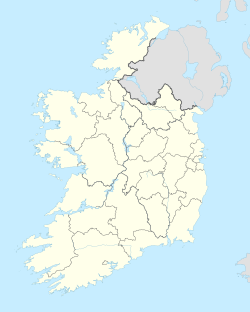| Kilmogue Portal Tomb | |
|---|---|
| Native name Leac an Scail Cill Mhóg (Irish) | |
| Kilmogue Dolmen Harristown Dolmen Cromlech of Kilmogue [1] | |
 The dolmen in 2015 | |
| Type | dolmen |
| Location | County Kilkenny, Ireland |
| Coordinates | 52°24′11″N7°15′44″W / 52.403143°N 7.262261°W |
| Area | Nore Valley |
| Elevation | 165 m (541 ft) |
| Height | 4 m (13 ft) |
| Built | c. 3000 BC |
| Official name | Kilmogue (Leacán Scoil) |
| Reference no. | 324 |
Kilmogue Portal Tomb, also called Leac an Scail, is a dolmen (portal tomb) and National Monument located in County Kilkenny, Ireland. [2] [3]
